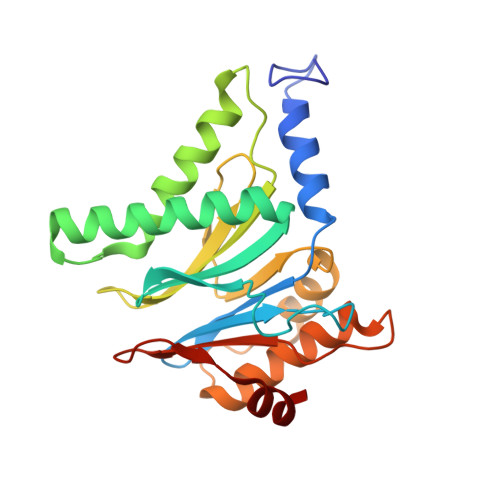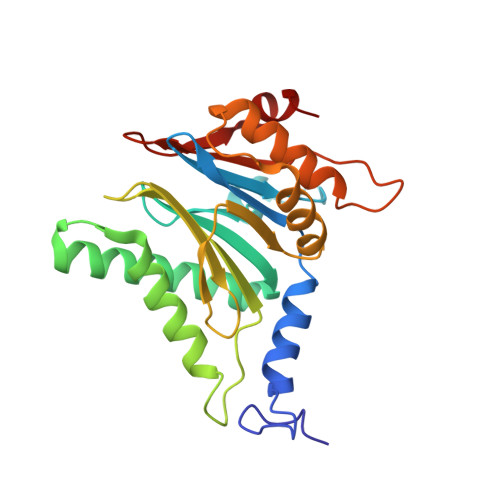Allosteric coupling between alpha-rings of the 20S proteasome.
Yu, Z., Yu, Y., Wang, F., Myasnikov, A.G., Coffino, P., Cheng, Y.(2020) Nat Commun 11: 4580-4580
- PubMed: 32917864
- DOI: https://doi.org/10.1038/s41467-020-18415-7
- Primary Citation of Related Structures:
6UTF, 6UTG, 6UTH, 6UTI, 6UTJ - PubMed Abstract:
Proteasomal machinery performs essential regulated protein degradation in eukaryotes. Classic proteasomes are symmetric, with a regulatory ATPase docked at each end of the cylindrical 20S. Asymmetric complexes are also present in cells, either with a single ATPase or with an ATPase and non-ATPase at two opposite ends. The mechanism that populates these different proteasomal complexes is unknown. Using archaea homologs, we construct asymmetric forms of proteasomes. We demonstrate that the gate conformation of the two opposite ends of 20S are coupled: binding one ATPase opens a gate locally, and also opens the opposite gate allosterically. Such allosteric coupling leads to cooperative binding of proteasomal ATPases to 20S and promotes formation of proteasomes symmetrically configured with two identical ATPases. It may also promote formation of asymmetric complexes with an ATPase and a non-ATPase at opposite ends. We propose that in eukaryotes a similar mechanism regulates the composition of the proteasomal population.
- Department of Biochemistry and Biophysics, University of California, San Francisco, CA, 94158, USA.
Organizational Affiliation:


















